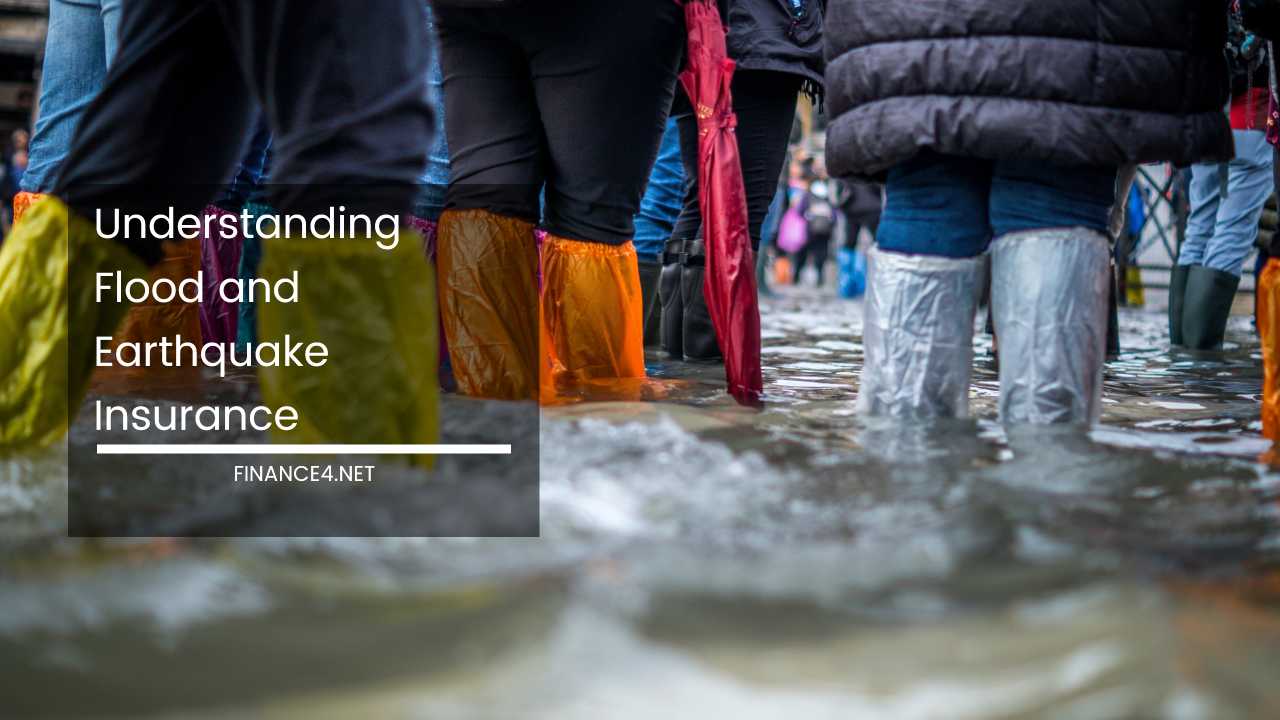Flood & Earthquake Insurance: Protect Your Home

Understanding Flood and Earthquake Insurance: Securing Your Castle Against Natural Disasters
Imagine a heart-stopping jolt shaking you awake. Pictures crash off the walls, furniture dances erratically, and a primal fear grips you. Earthquakes, unpredictable and powerful forces of nature, can leave a trail of destruction in their wake.
Now, picture a different nightmare: relentless rain pummeling the earth for days. Rivers overflow their banks, and floodwaters begin their relentless march towards your home.
Floods, equally devastating, can wreak havoc on property and belongings, turning cherished memories into waterlogged debris.
These are just two natural disasters that can shatter the illusion of safety and security in your own home. But what if there was a way to financially prepare for the unexpected? This is where flood insurance and earthquake insurance come in, acting as essential shields against the financial ruin these events can bring.
This comprehensive guide dives deep into understanding both types of coverage, empowering you to make informed decisions to safeguard your most valuable asset – your home.
The Achilles’ Heel of Standard Homeowners Insurance
Most homeowners mistakenly believe their standard insurance policy is an impenetrable fortress, protecting them from any peril.
Unfortunately, that’s not quite the case. Floods and earthquakes are considered separate perils, excluded from the standard coverage offered by most homeowners insurance policies.
Here’s why these exclusions exist:
- Flood Insurance: Standard homeowners insurance specifically excludes flood damage. Floods are statistically more common than other disasters and can cause widespread devastation, making them a higher risk for insurers.
- Earthquake Insurance: Similarly, earthquake damage isn’t included in standard policies. Earthquakes are also geographically concentrated, making them a higher risk in certain areas.
Flood Insurance: Building an Ark for Your Property
Floods can originate from various sources, including overflowing rivers, storm surges caused by hurricanes, or even rapid snowmelt.
They can cause significant damage to your property’s foundation, walls, and belongings. Flood insurance acts as a safety net in such situations, offering financial assistance to rebuild or repair your home and replace lost belongings.
Here’s a closer look at flood insurance:
-
Who Needs It? It’s highly recommended for anyone living in a high-risk flood zone, as designated by the Federal Emergency Management Agency (FEMA) [https://www.fema.gov/flood-maps]. Don’t be lulled into a false sense of security if you live in a moderate or low-risk zone. Floods can still occur in these areas, and having flood insurance can be a lifesaver.
-
Types of Coverage: The National Flood Insurance Program (NFIP), managed by FEMA, offers flood insurance policies. These policies typically cover:
- Building coverage: Protects the structure of your home, including the foundation, walls, and electrical systems, up to a specified limit.
- Contents coverage: Protects your belongings within the home, such as furniture, appliances, and clothing, up to a separate limit.
-
Cost of Flood Insurance: The cost of flood insurance varies depending on several factors, including:
- Location: Flood zone designation plays a significant role. Homes in higher-risk zones will have higher premiums.
- Flood Risk Level: Factors like your home’s elevation compared to the flood source and building materials can influence the cost.
- Deductible: The amount you pay out of pocket before insurance kicks in can also affect the premium.
- Dwelling Coverage Amount: The value of your home’s structure will influence the cost of building coverage.
- Contents Coverage Amount: The value of your belongings will determine the cost of contents coverage.
Earthquake Insurance: Shoring Up Your Home Against Tremors
Earthquakes can cause a terrifying symphony of destruction. The ground shudders violently, cracks snake across foundations, roofs cave in, and in extreme cases, complete structural collapse can occur.
Earthquake insurance provides financial assistance to rebuild or repair your home after an earthquake and can also help cover additional living expenses while your home is unlivable.
Here’s a breakdown of earthquake insurance:
- Who Needs It? Earthquake insurance is a wise investment for those living in earthquake-prone areas. The U.S. Geological Survey [https://www.usgs.gov/programs/earthquake-hazards] provides valuable information on earthquake risks in different regions.
- Types of Coverage: Earthquake insurance policies typically cover:
- Dwelling coverage: Protects the structure of your home, including the foundation, walls, and roof.
- Additional living expenses: Covers costs like temporary housing and meals if your home is un inhabitable after an earthquake.
- Debris removal: Pays for the removal of debris from your property after an earthquake.
Cost of Earthquake Insurance: The cost of earthquake insurance depends on several factors, including:
-
- Location: Similar to flood insurance, your location and the earthquake risk in your area significantly impact the premium.
- Dwelling Coverage Amount: The value of your home directly affects the cost of dwelling coverage.
-
- Deductible: A higher deductible lowers your premium but means you’ll pay more out of pocket before insurance kicks in.
- Construction Type: Homes built with earthquake-resistant features may qualify for discounts.
- Flood vs. Earthquake Insurance: Making an Informed Decision
The decision to get flood or earthquake insurance depends on your specific situation. Here are some key factors to consider:
- Location: Check flood zone maps and earthquake hazard maps to assess your risk.
- Financial Vulnerability: Consider the potential financial burden a flood or earthquake could cause. Would you be able to rebuild or repair your home without insurance?
- Peace of Mind: These insurance policies offer valuable peace of mind, knowing you’ll have financial support during a disaster.
Beyond the Basics: Additional Considerations
- Talk to Your Insurance Agent: Don’t navigate the complexities of flood and earthquake insurance alone. Discuss your specific needs and risk factors with your insurance agent. They can help you choose the right coverage options, explain policy details, and ensure you get the best value for your money.
- Review Your Policy Regularly: Your needs and risk factors may change over time. It’s crucial to review your policy periodically to ensure it still meets your needs. Flood zones can be redrawn, and earthquake risks can be reevaluated.
- Consider Additional Protections: Depending on your location, you might want to explore windstorm or flood surge coverage as part of a homeowners policy. These can offer additional protection in areas prone to hurricanes or coastal flooding.
Mitigating Your Risk: Proactive Steps
While insurance is essential, it’s wise to take proactive steps to mitigate your risk from both floods and earthquakes. Here are some tips:
-
Flood Mitigation:
- Elevate your home, if possible, especially if you live in a high-risk flood zone.
- Waterproof your basement or crawlspace.
- Install flood vents to allow floodwaters to enter and exit your foundation, minimizing structural damage.
-
Earthquake Mitigation:
- Bolt your foundation to the underlying bedrock to improve stability.
- Brace unreinforced brick chimneys and masonry walls.
- Secure heavy furniture and appliances to prevent them from toppling during an earthquake.
The Final Word: Securing Your Castle
By understanding flood and earthquake insurance, and by taking proactive steps to mitigate your risk, you can transform your home from a vulnerable castle to a resilient fortress.
These measures can provide invaluable financial protection and peace of mind, allowing you to weather the storms, both literal and metaphorical, with greater confidence.



